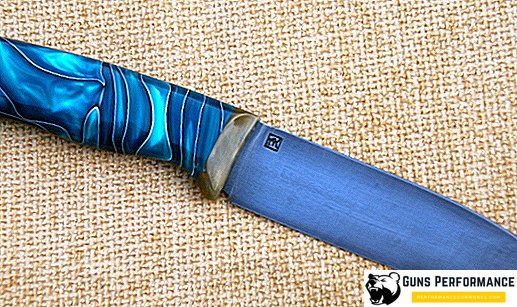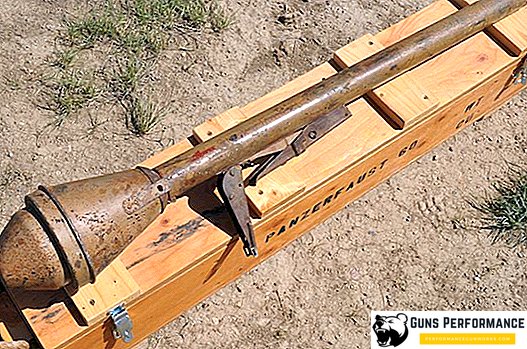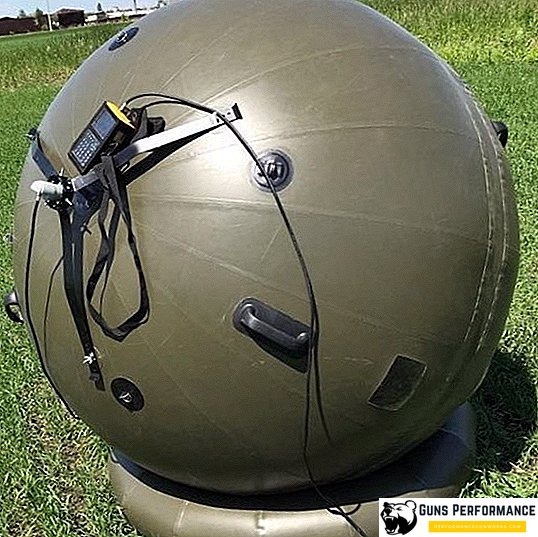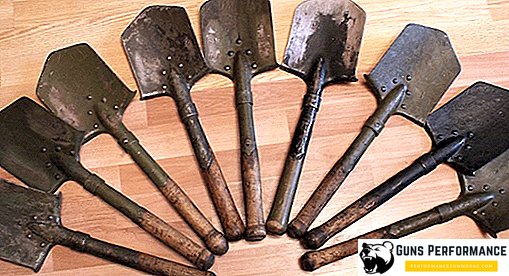
Knives made of damask steel have gained immense popularity in the narrow circle of lovers of cold weapons and not only. Fans of knives dream of getting a legendary damask knife in their collection. Many blacksmiths learned to make damask steel, but high-quality products are obtained only from an experienced craftsman. Let's try to figure out what is damask steel, and whether knives are good from it.
The history of the appearance of damask steel
The first mentions about the damask knives and swords appeared after the campaign of Alexander the Great in the uncharted lands of India. The ancient warriors were amazed at the quality of the blades of the local nobility. Their swords easily cut down the armor and weapons of the hapless conquerors. Returning from a campaign, the warriors told the legends of magical blades with magical powers. Over the years, these legends overgrown with fables, and the Indian masters carefully concealed the truth.
Indeed, damask knives appeared in India. Local craftsmen have learned how to make "vuttsy" - bullist ingots, weighing a little less than a kilogram. Before selling, these ingots were cut into two equal parts to demonstrate the structure of the metal to the buyer. Damask steel Indian blades differed extraordinary strength, while possessing sufficient flexibility. There are legends about damask sabers worn on a belt like a belt. Skilled craftsmen could give the damask steel different colors by adding copper sulphate powder to the hot steel. The blades could be blue, green and even white.
Tales of bulat hunting knives, having on their blade images of people, animals or correct drawings - no more than a delusion of people who do not know the difference between damask knife and mosaic Damascus knife. The production technology of Bulat eliminates the possibility of the appearance of such patterns on the blade. While Damascus knives can be done with a certain pattern.
Still remains a mystery, as in ancient India managed to get damask steel, which has such outstanding working properties. For centuries, scientists and masters have tried to unravel this secret. There are documents from which it can be concluded that the production of bulat was mastered in Russia in the 16-17 centuries, but at the end of the 17th century the secret was lost.
Metallurgist Pavel Anosov was the first person who made the damask closest to modern analogues. After many years of trial and error, he managed to get a strip of real Bulat. She was flexible and unusually firm. The blade made of this forging, easily chopped up bones and nails, while the cutting edge remained intact.
Scientists were surprised to learn the secret of the production of Bulat. It turned out that this is a common carbon iron, which acquires outstanding quality due to the crystallization method, special cooling and proper selection of raw materials.
Bulat production methods

Bulat is carbon steel obtained by combining carbon with iron. Carbon saturation of the metal occurs at red hot temperatures. After saturation, the metal should be slowly cooled. This creates the so-called "cementite", which gives the damask knives flexibility. Forging is made with a light hammer, so as not to destroy the thin layers of cementite. Produced multiple heating to red. If at least once to exceed the temperature, damask will lose its properties. The production technology of Bulat is extremely complex, only a few masters know it perfectly, who jealously guard their secrets.
Now only blacksmiths produce damask steel. The fact is that the specific features of Bulat are ideally suited for the production of knives and melee weapons; there was no other use of damask steel. Wrought-iron knives are the decoration of any collection and have excellent working qualities, surpassing even modern knife powder steels.
Tests of damask knives against alloy steels

For many years, in the community of hunters and knife lovers, the debate is not going away; whether damask knives are better than modern alloy steel knives. To answer this question, a rope cutting test was conducted. The best were those knives that could carry out the greatest number of cuts without sharpening. Candidates were selected as follows:
- Benchmade of steel N690;
- Benchmade from steel 440s;
- Knife firm Marttiini from ordinary carbon steel (this brand is famous for the excellent heat treatment of its steel);
- Classic damask from the blacksmith L. Arkhangelsky;
- Carbon blacksmith blacksmith S. Lunev;
- Damask knife from the blacksmith Pampuhi (is one of the few craftsmen who can make high-quality damask steel);
- Knife of stainless steel from Pampukha (Stainless steel damask - a modern design that should retain all the best properties of the classical damask, without rusting).
All knives before dough were carefully sharpened on a "Lansky" machine at an angle of 20 degrees. After such a sharpening, all the knives lightly shaved the hair on the forearm. The rope for the test was wrapped with masking tape.
According to the test results, it turned out that the blacksmith Bulat Pampukhi confidently took the lead. The number of cuts of the rope was three times higher than the results of Benchmade knives, which ranked second. The daisy knives of Arkhangelsk and Lunev were at the end of the list, losing even to the carbon Marttiini.
After the test, it turned out that hunting knives from damask steel, produced in compliance with all the technologies, are far superior to even modern knife steel. However, the test revealed that many craftsmen make knives from low-quality damask steel, suitable only for decorative purposes.
The best were knives of the master Pampuhi, who additionally underwent tests on dry pine bars, which were not whitened, but chopped, trying to test the knife for high impact loads. As a result of additional tests, the cutting edge did not receive any visible damage. Even with thick carts and imperfect geometry for cutting products, the craftsmen left behind their competitors.
Damask Kitchen Knives

If you really want to buy a damask knife for the kitchen, you should consider a few nuances:
- There are no serial knives from damask, and especially kitchen ones;
- The classic damask rust, and every day only a big fan will agree to oil the kitchen knife;
- A simple kitchen knife made of cast Bulat will cost no less than a hunting blade;
- To sharpen a good damask knife will take up to two hours of work. Simple kitchen sharpeners for this procedure will not work;
- If you nevertheless decided to order a damask knife for the kitchen, do not forget that the thickness of the blade of a kitchen knife usually does not exceed two millimeters.
When buying a kitchen knife from Bulat to the kitchen, choose stainless bulat, although finding a good master for such a steel has become even more difficult than in the case of the classic bulat.
Folding knife from Bulat

Folding knives from damask are rare, but sometimes they are found. They are made only to order and are very expensive. An unknowing person can be misled by dishonest sellers, slipping a Damascus steel knife under the guise of a damask folding knife, and more often even from a usual one with etching under Damascus. It must be remembered that the pattern on the damask blade is very different from the Damascus blade. If you are lucky, and you were able to purchase a folding knife from real Bulat, then you will be happy with the purchase before the first sharpening. To sharpen a damask blade with a simple sharpener or with an ordinary grindstone is not an easy task.
The low corrosion resistance of bulat will make your blade rusty if you leave it wet or do not clean it after cutting meat or vegetables. You can of course pickle the blade in lemon juice, but this will spoil the unique pattern of the structure of the damask knife. A penknife should first of all be convenient for everyday use, and the blades for them are usually made of stainless steel. You can order a penknife made of stainless steel, but this will double the cost of the product, the quality of stainless steel is very different from master to master. Even the same blacksmith can get low-quality parties Bulat.
Sharpening damask knives
The sharpening of damask knives is not much different from the sharpening of ordinary ones, but it has several nuances:
- Damask knife, due to its high hardness, is very hard to sharpen;
- When sharpening, you should try not to scratch the blade;
- It is not recommended to use diamond abrasive sticks when grinding, they can damage the structure of the blade.
The process of sharpening knives is a leisurely activity, many even equate it to meditation. In the case of damask blades, be prepared to meditate for a long time.
Advantages and disadvantages of cast Bulat knives
Knives from damask have a number of advantages:
- High blade hardness combined with flexibility;
- Rarely requires sharpening;
- Hunting and the subsequent cutting of the beast will seem unusually easy with such an assistant.
Not bypassed damask knives and cons:
- Tendency to rust;
- High price;
- The quality of Bulat is very different from batch to batch.

If you like damask knives, you should purchase at least one copy in the collection. Do not forget about the care of the blade, and the knife will serve you for years. If you use such a knife in the kitchen, grease it with olive or sunflower oil after work.












